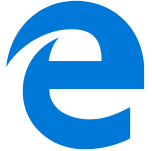Fill out the form to get more information about the Grace Hopper Program bootcamp of your choice.

Last Updated 11/29/2023
With the rise of artificial intelligence, many professionals are concerned about its impact on software development. Will GenerativeAI tools, like ChatGPT, replace the need for coders in the coming years? Is it still worth it to learn how to code?
The good news is that while artificial intelligence and software development will continue to be intertwined, the demand for skilled developers isn’t expected to slow down any time soon.
The number of software developers worldwide is expected to reach 28.7 million in 2024. The U.S. Bureau of Labor Statistics (BLS) estimates software developer roles to grow 26% by 2032.
With demand rapidly growing, coders enjoy the opportunity and flexibility that professionals in many other occupations can only envy. Coders can work for large companies, small startups, or for themselves. They also can work in an office or from home.
Moreover, coders can exercise that freedom while earning up to six-figure salaries. An exploration of some common career paths for graduates of coding bootcamps reveals a diverse wealth of options for how to make money coding.
What Is the Average Coding Salary?
According to ZipRecruiter, the average annual salary for software engineers was $139,952 as of November 2023. By comparison, the median salary for all occupations in the U.S. was $33,318.
Under the broad umbrella of coding, however, an individual’s precise salary can vary widely, depending on factors including:
Industry Type
Many industries employ coders, but some stand out for offering richer rewards than the median salary.
Overall, software publishers that create and sell commercial programs offer the highest coding salaries, according to the BLS:
Computer programmers at software publishers typically earn $106,120 annually.
Software developers at software publishers average $134,430 a year.
Web developers and digital designers make $138,010 annually.
Beyond software publishing, the highest-paying industries for different types of coding include:
Manufacturing
Finance and insurance
Computer systems design
Management, scientific, and technical consulting services
Education Level
There are many ways to learn how to code, ranging from a traditional degree program to coding bootcamps to self-taught learning. The right path for you will ultimately depend on your professional goals, learning style, and schedule.
In terms of salary, there’s not much difference between recent computer science graduates and those who complete a bootcamp. As of November 2023, Glassdoor estimates that computer science graduates with a year or less of experience make $72,163, while a Course Report survey discovered the average post-bootcamp salary was around $70,000.
However, while salaries may be similar, it’s important to remember that a traditional four-year degree costs significantly more than a coding bootcamp. According to Course Report, the average cost of a four-year computer science degree is $163,140, while the average full-time coding bootcamp can range from $13,000-$20,000.
Years of Experience
As coders gain experience, so does their opportunity to increase their compensation. Glassdoor reports increasing coding salaries for software developers with more years in the field:
Entry-level software developers with a year or less of experience start at around $84,275.
Software developers with four to six years of experience average about $97,245 annually.
With more than seven years of experience, workers earn upwards of $102,638.
Job Location
Coding is a highly portable occupational skill, with jobs available in all parts of the country. However, the BLS reports that some states offer much higher compensation levels than others, reflecting factors like demand for programmers and cost of living.
For software developers, for example, there’s a significant gap between the highest- and lowest-paying states. In Washington, the median annual salary is $151,010. In South Dakota, it’s $85,080.
In general, the highest coding salaries are found in California, home to Silicon Valley, and the state of Washington, headquarters to tech giants Microsoft and Amazon.
Coders can also find high-paying jobs in Alaska, Colorado, Minnesota, and the Northeast.
Types of Coding
All code is not created equal. The needs of the program or website will often dictate which programming language to use. Likewise, the type of coding job a student aspires to will guide which programming language to learn first.
Many experts recommend learning one language thoroughly rather than studying multiple languages simultaneously. Focusing on a single language is the quickest way to develop marketable skills while avoiding confusion between the different commands and syntaxes.
As with a foreign language, mastering one programming language also makes it easier and faster to learn additional ones.
Which language is the best for a beginner? It depends partly on what area of tech a student hopes to enter since each language has its own optimal applications.
A student’s choice of language may also depend on the preferences of the companies where they want to work. Learning a popular language boosts a beginner’s marketability, which may translate to a higher coding salary.
Here’s a look at some of the most in-demand languages and their uses:
Python
Python is used by roughly 45% of developers, according to Stack Overflow’s 2023 Developer Survey. It’s not hard to understand why.
Python has existed since 1991 and is still used for business applications, scientific computing, games, and other basic jobs. But while Python is considered a mature language, it’s in high demand today. Programmers fluent in Python work in leading-edge fields like machine learning and artificial intelligence.
Another benefit of Python is that it’s a relatively easy language to learn, because its code is closer to plain English than Java or C++. This allows students to move more quickly into programming and start writing programs sooner.
Java
Java is another language that’s more than a quarter-century old and has a wide variety of uses. Used early on for animating websites, it’s still a top language for web developers.
Java has also become a language of choice for devices other than computers. It’s the core language behind Android, the operating system for 85% of mobile devices. More recently, Java is being used for programming smart appliances, known collectively as the Internet of Things.
Java’s range of applications translates to great demand for Java developers. In fact, Stack Overflow’s 2023 Developer Survey found that it’s one of the top 10 most popular programming languages used by professional developers.
C++
C++ is a modern version of C, yet another language with deep historical roots. The kernels of several operating systems are written in C, including Windows, Mac OS, and Linux. Programs that run on those systems also utilize C languages, which helps explain why 20% of professional developers utilize them.
Compared with earlier versions, C++ allows programs to run faster and use less memory. That’s partly because it’s closer to machine language, meaning a CPU goes through fewer steps to implement the code.
While C++ is more challenging to learn than Python or Java, it offers the benefit of portability. A C++ language application written for one kind of processor is often easy to adapt to other architectures.
How to Make Money Coding From Home
Individuals with coding skills can work anywhere in the country. For many professionals—and the companies that hire them—that can mean working remotely.
According to CoderPad, only 15% of developers work fully on-site, with the rest working remotely or in a hybrid environment.
Increasingly, remote work options are among the top three most important job criteria for developers, and companies are also evolving their work models to match those demands.
Types of Coding From Home
Coding from home isn’t just geographically diverse. It can also call for a variety of coding skills. Types of coding that are common among remote workers include:
Program and App Development
Many of today’s most prevalent pieces of software are the products of collaborators contributing remotely. They include open-source programs such as the Firefox browser, the Android mobile operating system, and the Python programming language.
Large companies and small startups hire home-based software developers. FlexJobs, a website for job-seekers, features listings from firms like Amazon and Oracle, as well as cybersecurity, networking, telecommunications, and subscription software companies.
Web Design
The second largest single segment of the web design workforce is self-employed, accounting for 13% of all web and digital interface designers, according to BLS figures.
Web developers use scripting languages like JavaScript to build or maintain websites. They may do back-end development, creating the technical framework, or front-end work, crafting the layout and graphic look. Full-stack developers can do both.
Either way, an at-home web designer is likely to interact frequently with clients, via either video conferencing or in-person visits. Those clients are just as likely to be a traditional organization versus a tech company.
Game Development
Play is a serious business in the video game industry. According to tech research service Statista, the video game market is expected to reach $363.20 billion by 2027.
It’s also a thriving field for those eager to break into tech, especially for solo practitioners. Statista found that 27% of game developers either are self-employed or work as freelancers.
Remote game design can call on many different kinds of coding skills, from developing a concept to creating artwork or setting up systems to collect statistics.
Self-Marketing: Key to Coding From Home
Making money coding from home takes more than coding skills. It requires an entrepreneur's self-marketing expertise. Some tactics independent coders use to generate work include:
Posting Profiles
Prospective clients should be able to see at a glance a coder’s experience, programming languages, and certifications or specializations. It’s good to post profiles on multiple sites for freelancers, such as Upwork, Freelancer, and Guru, as well as a profile on LinkedIn. Remote workers can also register with tech employment agencies—Robert Half Technology, for example—that actively refer independent workers to companies.
Building a Portfolio
To demonstrate to an employer what a coder can do, highlighting what they’ve done can help. Profiles and inquiry letters should include links to previous projects. Until a beginner accumulates a portfolio of work for others, they can demonstrate their ability with their own projects, particularly ones that solve novel problems.
Searching Job Sites
The volume of job postings on websites like Monster.com and Computerwork.com can appear overwhelming. But including words like “contract,” “freelance,” and “telecommuting” in a search can narrow the list to jobs that fit an at-home worker’s needs.
Competing in Coding
Coding competitions can sharpen skills while showing them off to potential clients and collaborators. Some competitions offer cash prizes, too.
Networking With Other Professionals
Joining professional organizations like the IEEE Computer Society and WebProfessionals.org can help job seekers make connections and learn about job opportunities by word of mouth, as well as keep up with new developments in the field. Contributing to open-source software projects is another means of networking with coders who have similar interests.
How to Make Money Coding Python
Among novice coders, Python has become one of the most popular languages. Python’s streamlined syntax makes it easier to learn than many others, allowing a programmer to rapidly start making money at coding.
It’s also versatile enough to open the door to a wide range of coding-based careers, with good salaries and robust projected job growth. Here are three examples:
Making Money Coding Python in Software Development
Python is an object-oriented programming language that excels at manipulating data. For that reason, it’s widely used in developing software for data analysis, such as in scientific research.
Those capabilities also make Python useful for machine learning and artificial intelligence, which crunch enormous amounts of data to help computer systems make split-second decisions.
Software development is a fast-growing occupation. According to the BLS, software developer jobs will grow 26% between 2022 and 2032.
They also offer high coding salaries. Glassdoor reports that Python Developers earn an average annual salary of $106,519 as of November 2023.
Making Money Coding Python in Quality Assurance
While some coders write software in Python, others employ it to test software, to see if it performs the tasks for which it’s designed, and to detect errors that need correcting.
Python is particularly useful for automating the testing process, which saves time compared with manually inputting data and checking the outputs. Open-source testing tools and libraries of prewritten code can speed the writing of automation scripts.
The BLS includes quality assurance jobs with software developer jobs, growing at the same rapid pace.
Median salaries for senior quality assurance engineers with Python skills were around $121,902 a year as of November 2023, PayScale reports.
Making Money Coding Python in Web Development
Python can be effective for coding websites as well as software. The Python Software Foundation lists web development to be one of the most common uses of Python.
The language’s versatility makes it useful for advanced web design—building sites that need to handle a variety of functions. It’s especially useful for websites that interact with users. For example, Python routines can utilize artificial intelligence to personalize suggestions to customers.
The BLS projects web developer jobs to grow a faster-than-average 17% over the course of the decade.
Web development pays well, though less than software development. Senior web developers with Python skills earned a median annual salary of about $82,122 as of November 2023, according to PayScale.
Prepare for a Satisfying Career in Coding
With the robust demand for coders across all segments of the business world, a beginning programmer has a wide array of options to make money coding. Intensive programs like the coding bootcamps at Fullstack Academy can prepare students for entry-level coding jobs in as little as 16 weeks while also acquainting them with several potential paths a coding career can take.
Explore how Fullstack Academy’s bootcamps can prepare you to pursue a career in the rewarding and high-growth field of coding or move into another tech area, such as data analysis or cybersecurity.
Recommended Readings
6 Productivity Hacks for Working From Home
The 9 Best Programming Languages to Learn in 2021
What Do Cybersecurity Analysts Do? Job Types, Training, and Salary
Sources:
CoderPad, "Hiring Remote Developers 101: Benefits, Top Sites, & Tips"
Course Report, "Are Coding Bootcamps Worth It in 2023?"
Glassdoor, "How Much Does a Computer Science Graduate Make?"
Glassdoor, "How Much Does a Python Developer Make?"
Glassdoor, "How Much Does a Software Developer Make?"
PayScale, Average Senior Quality Assurance (QA) / Test Automation Engineer With Python Skills Salary
The Python Software Foundation, "Applications for Python"
Stack Overflow, "2023 Developer Survey"
Statista, "Employment status among game developers worldwide from 2015 to 2021"
Statista, Video Games - Worldwide
Tech Crunch, "GitHub CEO: AI and Software Development Are Now Inextricably Linked"
U.S. Bureau of Labor Statistics, Occupational Employment and Wage Statistics, Computer Programmers
U.S. Bureau of Labor Statistics, Occupational Employment and Wage Statistics, Software Developers
U.S. Bureau of Labor Statistics, Occupational Employment and Wage Statistics, Web Developers


